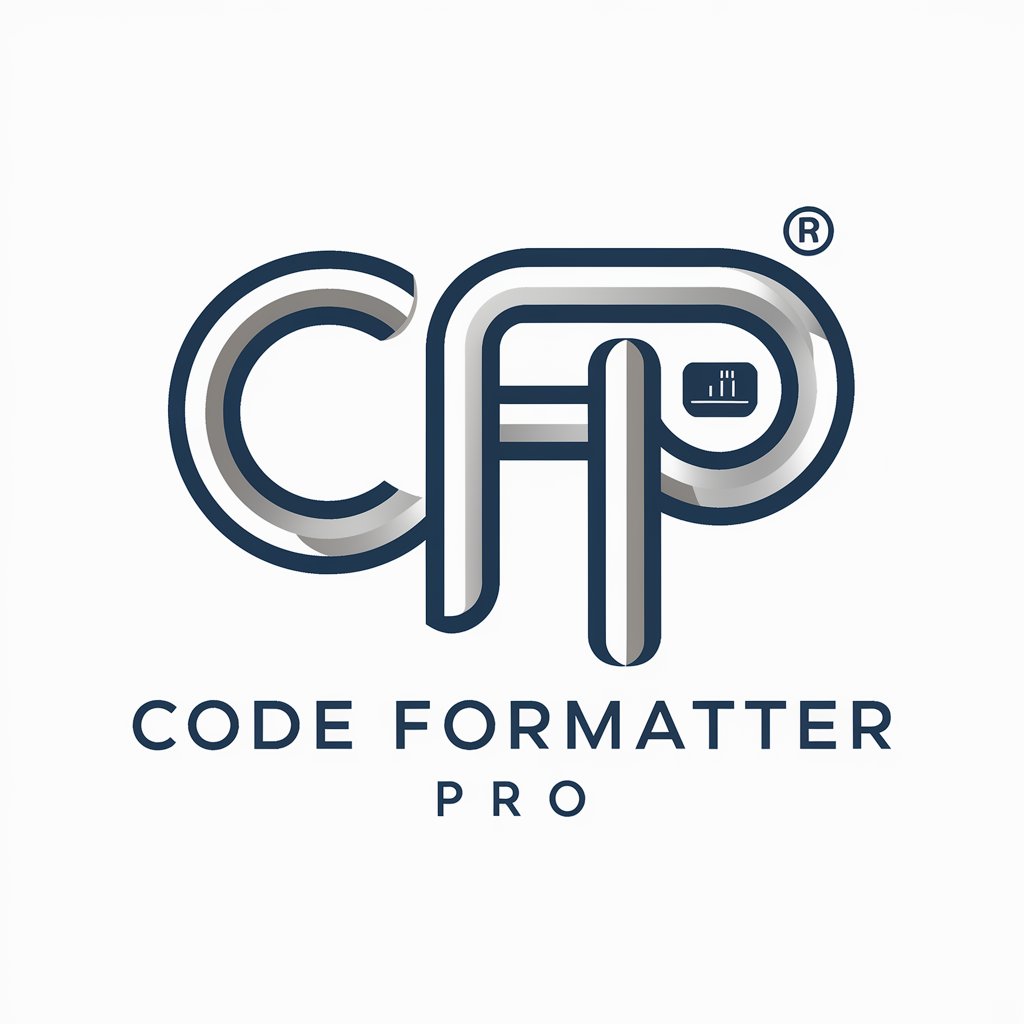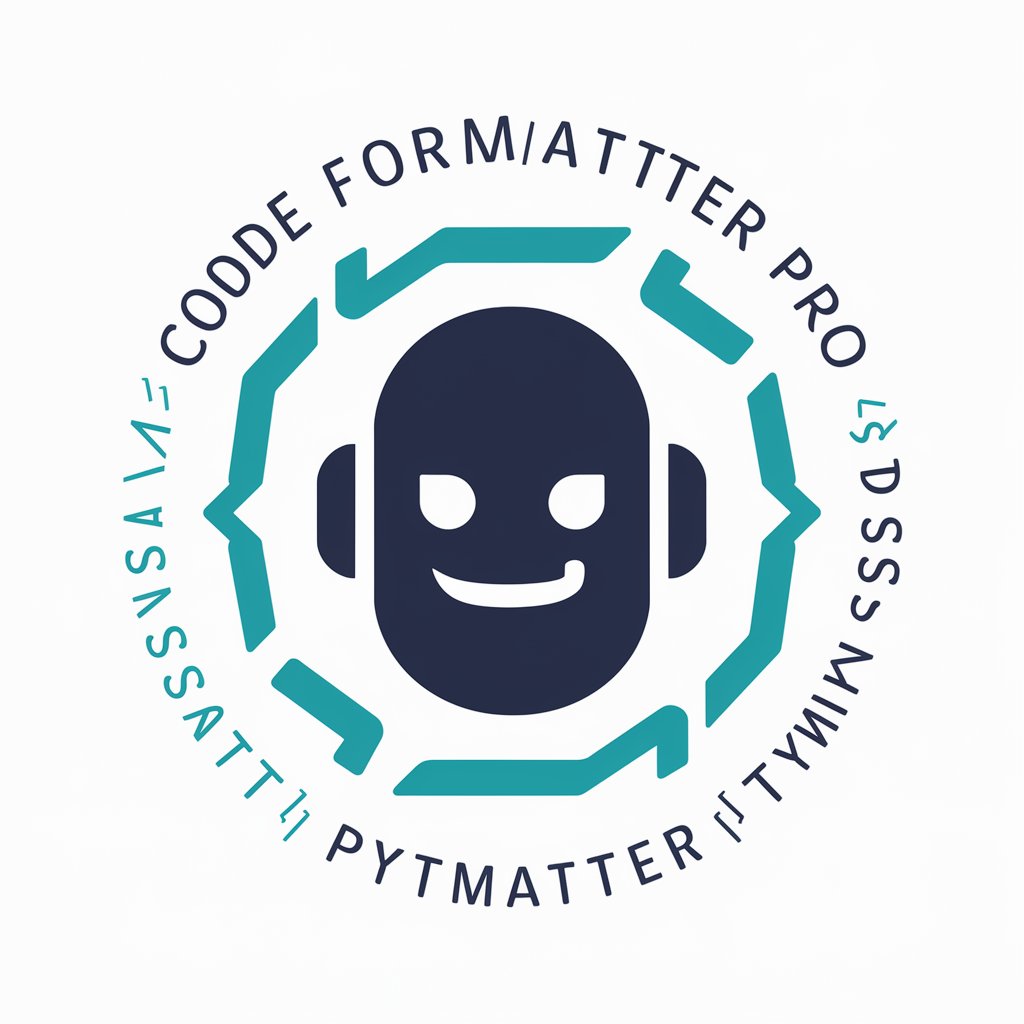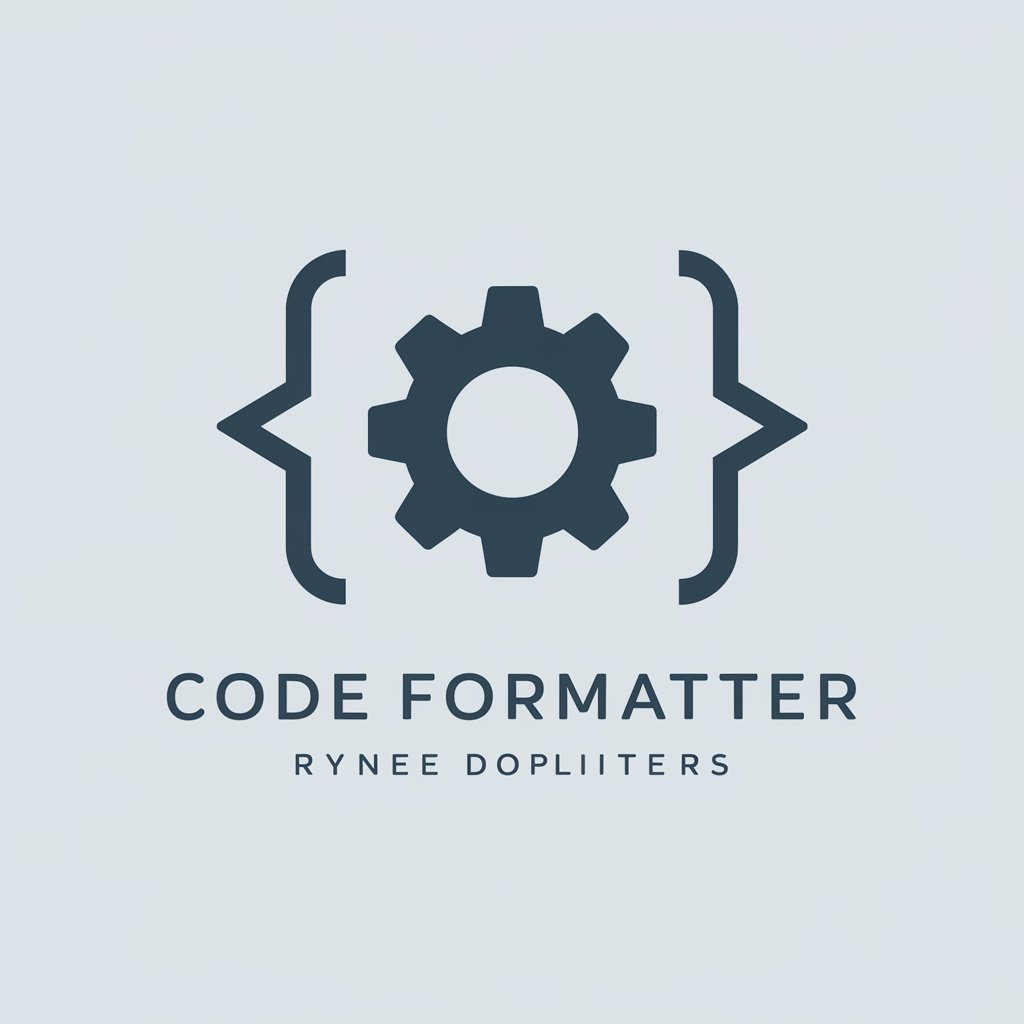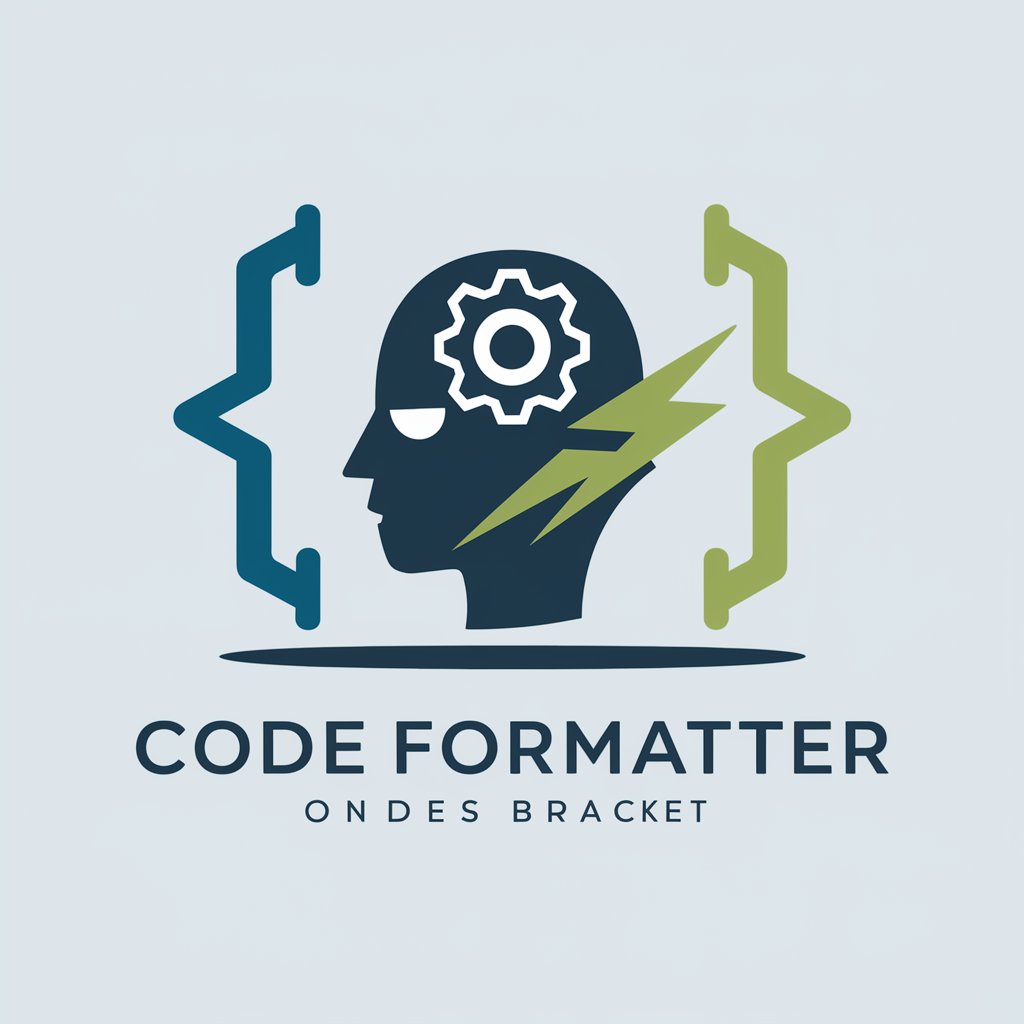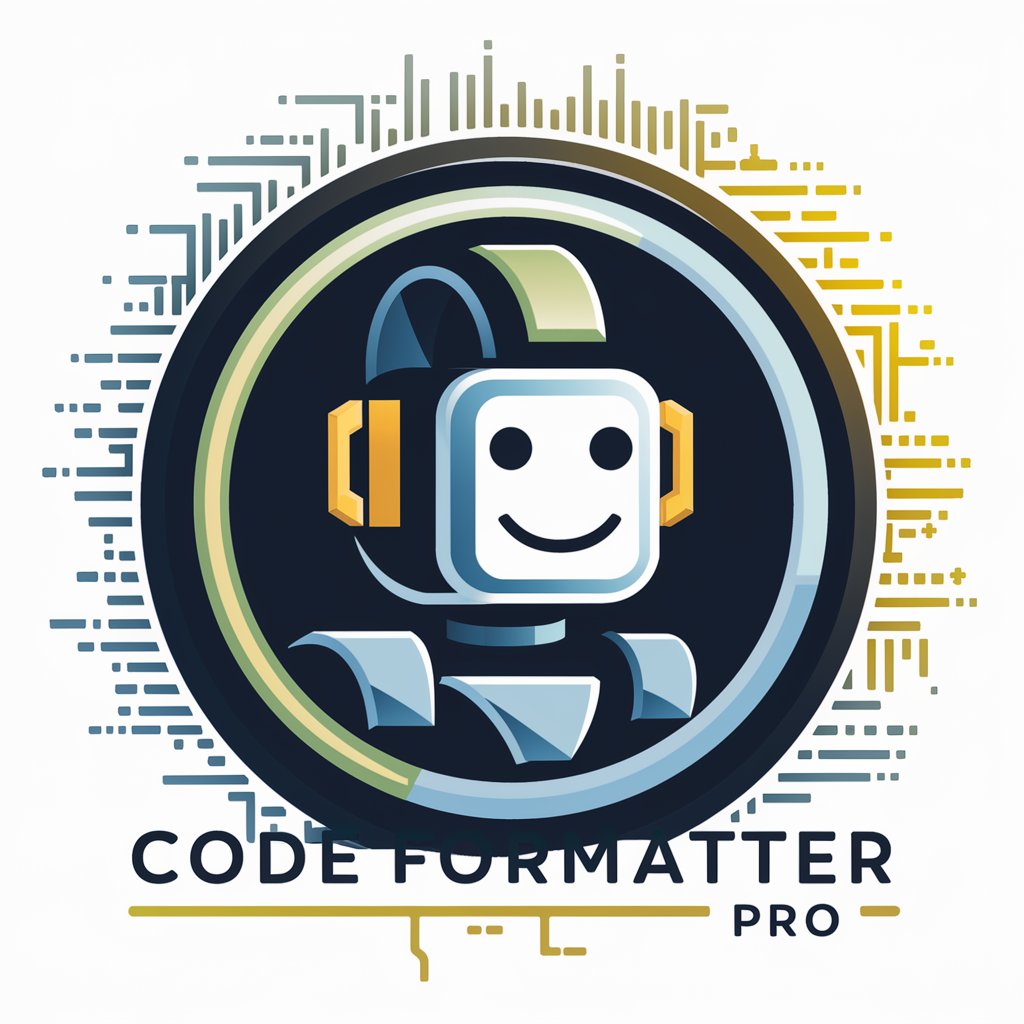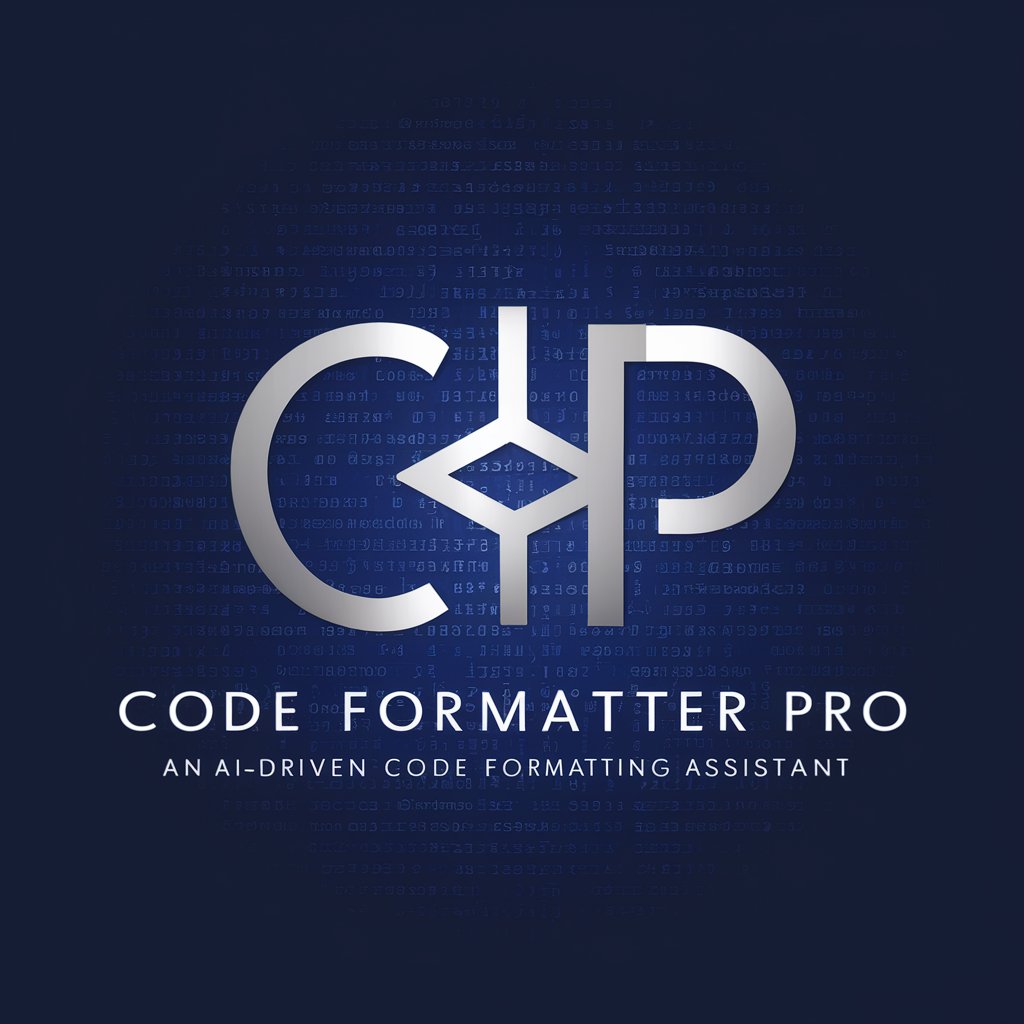
Code Formatter - Instant Code Beautifier
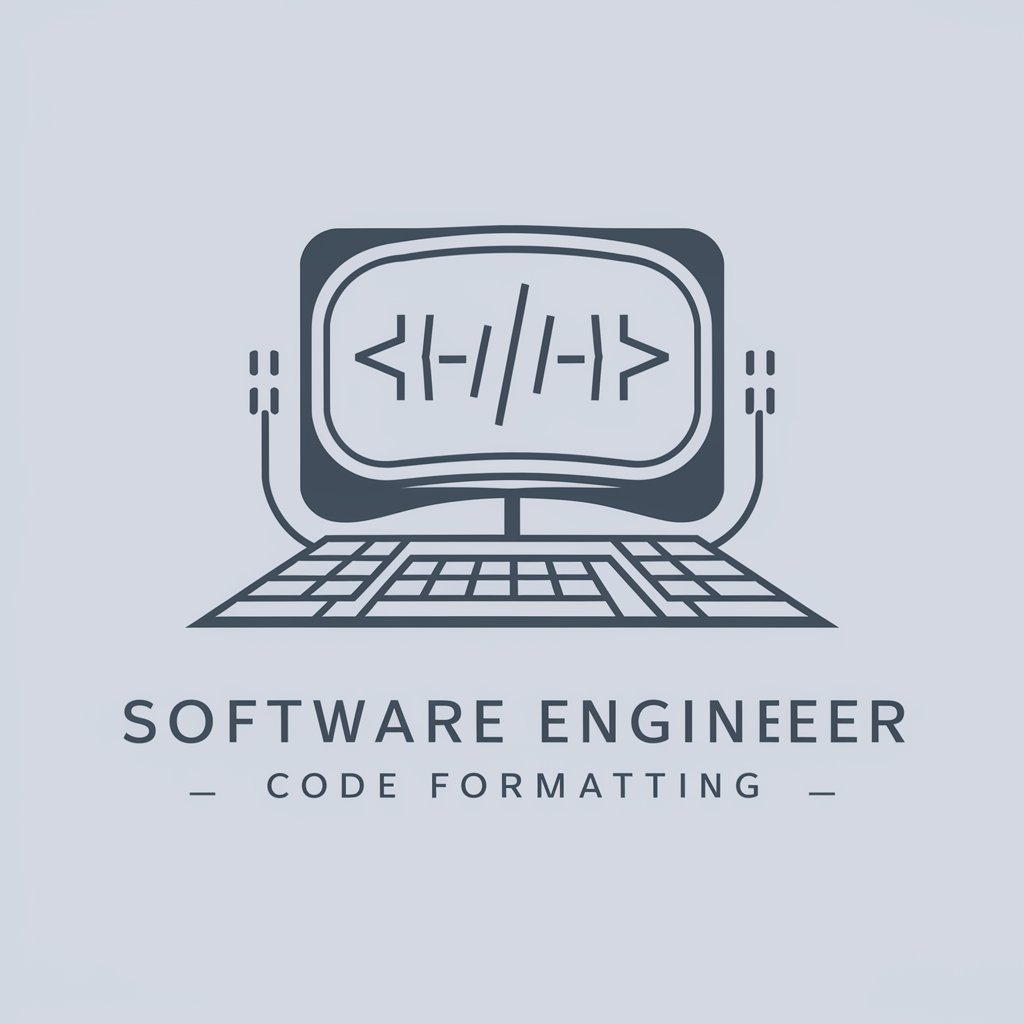
Welcome! Need help making your code shine? Let's get started.
Craft Beautiful Code, Effortlessly
How can I improve the readability of my code?
What are some best practices for code formatting in Python?
Can you help me reformat this JavaScript code for better clarity?
What tips do you have for organizing large codebases in Java?
Get Embed Code
Overview of Code Formatter
Code Formatter is designed as a specialized tool for software developers focusing on enhancing code readability and maintaining adherence to coding standards. This tool provides suggestions for improving code structure and syntax without executing or testing the code. By analyzing input code snippets, Code Formatter offers guidance on best practices in coding style, such as consistent indentation, proper use of whitespace, naming conventions, and documentation. An example scenario includes a developer working on a large project who uses Code Formatter to ensure all team members are adhering to the same coding standards, thus making the codebase easier to manage and understand. Powered by ChatGPT-4o。

Key Functions of Code Formatter
Indentation and Spacing
Example
Transforming Python code from inconsistent indentation levels to a unified format using 4 spaces per indentation level.
Scenario
A team of developers transitioning from various IDEs to a single development environment, needing uniform code formatting rules to prevent syntax errors and improve readability.
Line Length Adjustment
Example
Automatically wrapping lines that exceed a standard length (e.g., 80 characters) to enhance code readability and maintainability.
Scenario
An open-source project where contributors must follow strict PEP 8 guidelines for Python, ensuring all submissions are easy to review and maintain.
Naming Conventions
Example
Providing suggestions to revise variable and function names to follow specific programming language conventions such as camelCase for JavaScript or snake_case for Python.
Scenario
A software development firm implementing a new codebase standardization project aimed at increasing the code maintainability across different teams.
Target Users of Code Formatter
Software Developers
Developers at all levels, particularly those in large teams or contributing to open-source projects, benefit from using Code Formatter to maintain a consistent coding style, which facilitates easier collaboration and code maintenance.
Educational Institutions
Coding bootcamps and computer science courses can utilize Code Formatter to teach students about industry-standard coding practices and ensure that students' assignments are readable and well-structured.
Technology Companies
Tech companies, especially those with large or distributed development teams, can integrate Code Formatter into their development process to streamline code reviews and decrease onboarding time for new developers by ensuring code consistency.

How to Use Code Formatter
Step 1
Visit yeschat.ai to start using Code Formatter instantly without any signup or the need for ChatGPT Plus.
Step 2
Select the programming language you are working with from the tool’s interface to ensure tailored formatting guidelines.
Step 3
Paste the code snippet you wish to format into the designated input area of the tool.
Step 4
Use the 'Format' button to apply automatic code beautification based on industry best practices and specific language standards.
Step 5
Review the formatted code and use the copy function to paste it back into your development environment.
Try other advanced and practical GPTs
Translator Korean to English 신
Bridging Languages with AI Precision

Engelse vertaler
Translating Dutch with AI precision.

International Economics Expert
Master Economics with AI-powered Insights

International Law Helper
Powering Legal Insights with AI

Accounting Mentor
Demystifying accounting with AI

Zapier Webhook GPT Schema Writer
Automate your Zapier Webhook integrations with AI-powered schema generation.

Lesson Planner Genie
Craft EFL lessons with AI-powered precision.

Share Knowledge In Your Company
Powering Smart Decisions with AI-Driven Insights

2how MJ Architect
Crafting Visual Architecture with AI

Rechtschreibkontrolle
Perfect Your German with AI

Luna GPT
Smart AI for Tailored Interactions

Escritor de Artículos SEO con FAQs
Power Your SEO with AI-Driven Content

Frequently Asked Questions About Code Formatter
What programming languages does Code Formatter support?
Code Formatter supports a wide range of programming languages, including but not limited to Python, JavaScript, Java, C++, and HTML/CSS. This allows developers to ensure their code adheres to the specific syntactical rules and formatting standards of each language.
Can I customize the formatting rules applied by Code Formatter?
Yes, Code Formatter provides options to customize the formatting rules. Users can adjust indentation, bracket placement, and line length among other settings to match their team’s coding standards or personal preferences.
Is Code Formatter suitable for educational purposes?
Absolutely, Code Formatter is an excellent tool for educators and students. It helps in demonstrating good coding practices and instantly shows the impact of proper formatting on code readability and maintenance.
Does Code Formatter handle code minification and obfuscation?
While Code Formatter focuses primarily on improving code readability and structure, it does not include features for code minification or obfuscation, which are typically used for production environments to reduce file size or protect source code.
How secure is Code Formatter with sensitive code?
Code Formatter prioritizes user security and privacy. The tool processes code snippets locally on the user’s machine or in a secure cloud environment, ensuring that sensitive code does not get exposed or stored unnecessarily.
